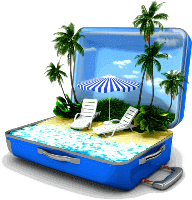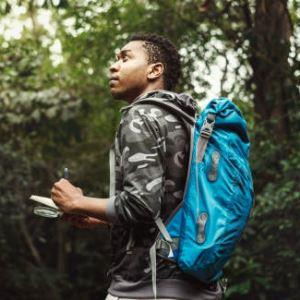 Kenya offers a spectacular fusion of untamed wilderness and coastal charm, making it a top destination for Indian travelers seeking both adventure and relaxation. By combining a thrilling safari with a tranquil beach escape, visitors get the best of two worlds in a single, well-planned itinerary. The journey usually begins in Nairobi, where travelers adjust to the local environment before heading into the heart of Kenya’s renowned wildlife conservancies. A few days in the Masai Mara introduce tourists to the majesty of Africa’s Big Five, wide open plains, and cultural encounters with the Maasai people. Game drives at dawn and dusk offer remarkable sightings, particularly during the Great Migration from July to September. From there, many travelers head to other parks like Amboseli, where elephants roam beneath the shadow of Mount Kilimanjaro. After the safari, the pace changes dramatically with a short domestic flight to the Indian Ocean coast. Diani Beach and Watamu are two of the most popular destinations. Diani offers modern beach resorts, vibrant marine life, and exciting activities such as snorkeling or dolphin watching. Watamu, a smaller and quieter alternative, charms visitors with coral gardens and Swahili coastal culture.For Indian tourists, travel logistics are straightforward. Kenya’s eVisa process is user-friendly, and direct or one-stop flights are available from major Indian cities. Our tour operators can help organize a seamless journey tailored to individual preferences. The cost range suits many budgets, from economical group safaris to luxurious bespoke experiences. Timing is crucial. The best months for this dual experience are January to March and July to October dry seasons that favor both wildlife viewing and beach activities. Many Indian families plan their Kenya vacations around school holidays, aligning with these ideal travel windows. Packing right ensures comfort light, neutral clothes for safari, modest beachwear for coastal regions, and essentials like sunscreen, binoculars, and insect repellent. Indian cuisine is easily available in cities and major tourist areas, with vegetarian options common. Combining safari and beach in one Kenya trip allows Indian travelers to witness nature at its rawest, then unwind in tropical serenity. It's not just a holiday it's an experience that touches both heart and soul.
Kenya offers a spectacular fusion of untamed wilderness and coastal charm, making it a top destination for Indian travelers seeking both adventure and relaxation. By combining a thrilling safari with a tranquil beach escape, visitors get the best of two worlds in a single, well-planned itinerary. The journey usually begins in Nairobi, where travelers adjust to the local environment before heading into the heart of Kenya’s renowned wildlife conservancies. A few days in the Masai Mara introduce tourists to the majesty of Africa’s Big Five, wide open plains, and cultural encounters with the Maasai people. Game drives at dawn and dusk offer remarkable sightings, particularly during the Great Migration from July to September. From there, many travelers head to other parks like Amboseli, where elephants roam beneath the shadow of Mount Kilimanjaro. After the safari, the pace changes dramatically with a short domestic flight to the Indian Ocean coast. Diani Beach and Watamu are two of the most popular destinations. Diani offers modern beach resorts, vibrant marine life, and exciting activities such as snorkeling or dolphin watching. Watamu, a smaller and quieter alternative, charms visitors with coral gardens and Swahili coastal culture.For Indian tourists, travel logistics are straightforward. Kenya’s eVisa process is user-friendly, and direct or one-stop flights are available from major Indian cities. Our tour operators can help organize a seamless journey tailored to individual preferences. The cost range suits many budgets, from economical group safaris to luxurious bespoke experiences. Timing is crucial. The best months for this dual experience are January to March and July to October dry seasons that favor both wildlife viewing and beach activities. Many Indian families plan their Kenya vacations around school holidays, aligning with these ideal travel windows. Packing right ensures comfort light, neutral clothes for safari, modest beachwear for coastal regions, and essentials like sunscreen, binoculars, and insect repellent. Indian cuisine is easily available in cities and major tourist areas, with vegetarian options common. Combining safari and beach in one Kenya trip allows Indian travelers to witness nature at its rawest, then unwind in tropical serenity. It's not just a holiday it's an experience that touches both heart and soul.
Sample Cost Table for Kenya Safari and Beach Trip (per person from India)
| Package Type | Duration | Safari Destinations | Beach Area | Estimated Cost (INR) | Inclusions |
|---|---|---|---|---|---|
| Budget | 9 Days | Masai Mara + Naivasha | Diani Beach | 140,000 – 180,000 | Shared van, mid-range hotels, meals, park fees |
| Standard | 11 Days | Mara + Amboseli | Watamu | 200,000 – 260,000 | 4x4 game drives, 3-star hotels, flights included |
| Luxury | 14 Days | Mara + Nakuru + Tsavo | Mombasa | 320,000 – 450,000 | Luxury lodges, private guide, premium resorts |
| Custom Family | 12 Days | Mara + Nairobi | Diani Beach | 220,000 – 280,000 | Flexible meals, child activities, private safari |
| Eco-Cultural | 10 Days | Mara + Community Reserves | Watamu | 170,000 – 210,000 | Homestays, cultural tours, marine parks |
Best Kenya Itinerary Combining Safari and Beach for Indian Travelers
Planning a Kenya itinerary that includes both safari and beach experiences gives Indian travelers the perfect balance between wild adventure and tranquil relaxation. Many prefer a 10 to 14-day trip, starting with a few days in iconic national parks and finishing on the serene Indian Ocean coast. A typical itinerary includes:
- Days 1-2: Nairobi & Arrival Prep: Upon arrival in Nairobi, travelers typically take some time to adjust after the long flight. This is the perfect window to buy essentials like a local SIM card, exchange currency, and acclimatize to the weather. Nairobi has enriching attractions such as the Giraffe Centre, where visitors can feed endangered Rothschild’s giraffes, and the David Sheldrick Wildlife Trust, known for rehabilitating orphaned baby elephants.
- Days 3-6: Masai Mara Safari: Next, travelers venture to the Masai Mara National Reserve, either by road or a short domestic flight. This iconic park is renowned for its abundant wildlife and offers daily game drives with opportunities to spot lions, leopards, elephants, buffaloes, and rhinos the Big Five. Lodging options range from budget-friendly tented camps to luxury safari lodges. In the evenings, cultural visits to Maasai villages provide insight into the community’s lifestyle and traditions.
- Days 7-8: Amboseli National Park: The journey then heads to Amboseli, a park famed for its large herds of elephants and the majestic backdrop of Mount Kilimanjaro. Early morning and late afternoon game drives offer excellent photographic opportunities. Wildlife viewing is particularly rewarding here, and the park’s marshes attract hippos, flamingoes, and other birdlife. Accommodation varies from rustic lodges to upscale camps.
- Days 9-13: Diani Beach or Watamu: After the adventure-filled days in the bush, a short flight to the coast transitions the trip into a phase of rest and recreation. Diani Beach, located south of Mombasa, offers luxurious resorts, pristine white sands, and a range of activities such as snorkeling, jet skiing, and glass-bottom boat rides. For those seeking a quieter vibe, Watamu provides a more intimate beach setting with coral reefs ideal for diving and access to historical ruins like Gede.
- Day 14: Departure: Depending on flight availability, the return journey either routes through Nairobi or departs directly from the coastal airport. Travelers can spend the final day shopping for souvenirs at popular markets like Village Market or Maasai Market, before heading to the airport for their flight back to India.
How to Plan a Kenya Safari and Beach Trip from India
Planning a combined safari and beach holiday to Kenya from India involves several key steps, all of which contribute to a seamless, rewarding travel experience. Start by identifying the travel season that aligns with both Kenya’s dry periods and Indian school holidays. The best months are January to March and July to October, when game drives are most productive and the coastal waters are calm and pleasant. Indian travelers can fly from major cities like Mumbai, Delhi, or Bangalore with airlines such as Emirates, Qatar Airways, or Ethiopian Airlines. Most routes connect through the Middle East or East Africa. Once in Kenya, a 14-day itinerary gives ample time for game drives in the Masai Mara, photo stops in Amboseli, and beach relaxation in Diani or Watamu. It’s recommended to start with the safari portion of the trip, as it involves more physical activity and early mornings, followed by restful days at the coast. Obtaining a visa is simple with Kenya’s eVisa platform. Applicants only need a valid passport, a recent photo, and proof of accommodation. Yellow fever vaccination is mandatory and may be checked upon arrival or return. For health safety, travelers should also carry mosquito repellent, hand sanitizer, and a small first-aid kit. When booking, use a certified local tour operator who understands Indian travel preferences, including dietary needs, cultural considerations, and language support. Reputable companies help arrange domestic flights, park permits, guides, and accommodation. Accommodation ranges widely. Safari lodges in Masai Mara or Amboseli offer options from luxury camps with private decks and plunge pools to eco-friendly tented sites. At the coast, Diani Beach features upscale resorts, while Watamu offers cozy boutique hotels. Combining them creates a richer, layered holiday. While preparing, travelers should pack light but thoughtfully. Include breathable clothing in neutral tones, a pair of comfortable walking shoes, sun protection, and swimwear. Kenyan shillings are used locally, and while credit cards are accepted in cities and resorts, carrying cash for smaller towns is wise. Many Kenyans use mobile payment platforms like M-Pesa, which can be accessed with a local SIM card from Safaricom or Airtel. This dual-style trip allows Indian travelers to encounter Africa’s rich wildlife, immerse in local cultures, and unwind beside the ocean. With the right planning, Kenya becomes more than a destination it becomes a story worth retelling.
Get the Best Kenya Tour Packages from India Combining Safari and Beach Tour
Indian travelers looking for an enriching yet balanced travel experience will find Kenya’s combined safari and beach packages to be unmatched in variety, value, and adventure. These curated itineraries are designed to offer an all-in-one escape that pairs the untamed beauty of East Africa’s wildlife with the relaxation of white-sand beaches and turquoise waters along the Indian Ocean. Standard tour packages typically span 7 to 10 days and include visits to iconic game reserves like Masai Mara and Lake Nakuru before concluding with a rejuvenating beach stay at Diani or Mombasa. These tours are ideal for travelers who want a well-rounded introduction to Kenya. Lodging is comfortable, and activities are pre-arranged, which eliminates the stress of independent planning. For those seeking more indulgence, luxury packages stretch from 10 to 14 days and elevate the experience with premium lodges, private 4x4 safari vehicles, gourmet dining, and beachfront villas. Destinations often include the Great Rift Valley, Amboseli National Park, and the Tsavo ecosystem. The beach portion is enriched with spa treatments, deep-sea fishing, and private excursions to marine parks. Travelers on a budget need not miss out. Affordable tour packages are structured to include shared safaris, group transfers, and three-star coastal accommodations while maintaining comfort and quality. These packages often include added flexibility and optional upgrades, making them suitable for solo travelers, students, or young families. Many Indian families and couples also prefer custom-made packages tailored around specific needs such as honeymoon itineraries, senior travel considerations, or family-friendly excursions. These often blend cultural visits to Maasai villages or Swahili coastal towns with wildlife experiences and leisure time at the beach. The growing demand for sustainable tourism is met through eco and cultural packages. These tours prioritize conservation-led safaris, locally owned lodges, and immersive cultural experiences, all while supporting Kenyan communities. Travelers can visit lesser-known parks like Ol Pejeta or community reserves in Laikipia before heading to unspoiled beaches in Watamu or Kilifi. All these packages can be arranged through experienced Kenyan tour operators who understand Indian preferences be it cuisine, travel pacing, or religious sensitivities. By opting for a curated tour, Indian travelers ensure a seamless, safe, and unforgettable experience that beautifully unites the thrill of the wild with the calm of the coast.
Affordable Kenya Safari and Beach Holidays for Indians; Magical Experience
Combining safari and beach experiences in Kenya doesn’t have to strain your wallet. Indian travelers looking for value-packed holidays will be delighted to discover that Kenya offers a wide range of affordable options that don’t compromise on the richness of experience. The key lies in strategic planning, smart travel choices, and selecting packages that align with both your budget and expectations. Start by traveling during the shoulder seasons April to June and November when park fees, accommodations, and flight rates are considerably lower. These months still offer enjoyable weather and fewer crowds, enhancing the experience without the premium price tag. Affordable Kenya safari typically begin with a shared group safari in a 4x4 van, visiting popular reserves like the Masai Mara or Lake Nakuru. These safaris offer excellent wildlife viewing while distributing costs among several travelers. Accommodation options include clean and comfortable mid-range lodges, eco-camps, or budget tented camps within or near the national parks. These places often provide full-board services, including local cuisine and guided game drives, which helps save on food and transportation expenses. Additionally, self-drive options or short road trips from Nairobi to parks like Lake Naivasha and Hell’s Gate can further reduce the cost. For the beach segment, consider smaller coastal towns like Watamu or budget guesthouses in Diani Beach. These offer direct access to pristine beaches, local eateries, and simple but welcoming rooms all at a fraction of the cost of premium resorts. Affordable activities abound, from snorkeling and dhow boat rides to visiting marine parks, historical ruins, and local markets. Local airlines such as Jambojet and Safarilink offer low-cost flights between Nairobi and Mombasa or Ukunda, saving both time and money. Booking these flights well in advance can make a significant difference in your overall travel budget. To stretch your funds further, opt for combo packages offered by our tour operators, who understand Indian travelers’ preferences and provide tailored experiences. Travelers should also consider meals and currency management. Many lodges include meals in their rates, and Indian vegetarian food is often available in cities and coastal towns. Carrying a mix of cash and cards ensures smooth transactions, especially in remote areas where card facilities may be limited. A magical Kenya safari and beach holiday doesn’t have to be expensive. With the right timing and smart choices, Indian tourists can enjoy the best of Kenya its wildlife, landscapes, and coastline at a cost that suits their budget, without missing out on the magic.
Kenya Travel Tips for Indian Tourists Combining Safari and Coast
To enjoy a fulfilling safari and beach holiday in Kenya, Indian tourists need to prepare carefully, considering logistics, safety, and cultural nuances. Travel to Kenya from India offers an exotic mix of rugged game drives and serene seaside retreats, but to make the most of this contrast, it helps to know what to expect. These travel tips help Indian visitors stay comfortable, informed, and confident throughout the journey.
- Pack Light but Smart: Travel light, but prioritize function over fashion. Safari clothing should be in earth tones like beige, green, or brown to avoid attracting insects or disturbing wildlife. Choose breathable, quick-dry fabrics to stay cool and comfortable. Pack a hat, sunglasses, sunscreen with high SPF, insect repellent, a good pair of walking shoes, and layered clothing for chilly mornings and evenings. For the coast, include modest swimwear, sandals, and cotton clothes suitable for hot, humid weather. A pair of binoculars, a torch, and portable power banks are also useful in remote safari camps.
- Currency and Payments: The Kenyan Shilling (KES) is the official currency. While major towns and resorts accept cards, it’s best to carry cash in smaller denominations for tips, markets, and rural areas. Mobile money through M-Pesa is extremely popular, allowing easy payments even in small shops, but requires a local SIM card and registration. Notify your bank in advance if you plan to use international cards to avoid service disruption.
- Food and Dietary Requirements: Kenyan cuisine offers a mix of African, Indian, and international influences. Dishes like chapati, pilau, and grilled meats are widely available. Indian travelers will find vegetarian and Jain-friendly options in Nairobi, Mombasa, and tourist hubs. Tour operators and hotels are accustomed to dietary restrictions just inform them in advance to ensure appropriate meal preparation.
- Connectivity: Staying connected is easy in most cities and tourist regions. Safaricom and Airtel offer reliable SIM cards with affordable data packages. Coverage in national parks can be limited, but many safari lodges provide Wi-Fi in common areas. Download offline maps and essential travel apps before you travel to minimize inconvenience.
- Safety and Health: Stick to bottled water and avoid raw or uncooked food outside trusted restaurants. Carry basic medications, hand sanitizers, and a mosquito net if your lodge doesn’t provide one. Avoid isolated areas after dark and keep valuables secure. Comprehensive travel insurance that includes medical evacuation is essential, especially for safari-goers.
- Language and Culture: English is widely spoken and used for official communication, alongside Swahili. Kenyans are friendly and value politeness. Simple greetings go a long way. Modest dress is encouraged, especially on the coast and in rural areas. Respect local customs, photography rules in villages, and always ask before taking pictures of people.
Why Choosing the Best Time for Safari and Beach in Kenya for Indian Travelers is Crucial
 Timing plays a vital role when it comes to planning a Kenya trip that merges safari with beach relaxation, especially for Indian travelers managing school holidays, work leave, and climate comfort. Kenya’s weather patterns significantly influence the quality of game viewing, travel convenience, and coastal experiences. Selecting the right time can dramatically enhance the enjoyment and efficiency of your journey. The best time for safari falls in two main dry seasons: January to March and July to October. During these months, wildlife is easier to spot due to less vegetation and animals congregating around waterholes. Game drives in places like Masai Mara, Amboseli, or Tsavo are more productive, offering high chances to witness the Big Five or, if traveling between July and September, the Great Wildebeest Migration. On the coast, dry seasons translate to clear skies, warm ocean waters, and low humidity ideal for sunbathing, swimming, and water sports. This period is also less affected by heavy rains, ensuring uninterrupted travel plans and better road conditions. Diani, Watamu, and Mombasa are particularly attractive during this time for their reliable weather, vibrant beachside culture, and thriving marine life. For Indian families and students, these seasons align well with common school breaks: summer holidays in May and June, autumn break around October, and winter vacations in December. Planning around these months allows for both educational and leisure value, especially for children experiencing their first African safari. By contrast, the rainy seasons long rains from March to May and short rains in November pose certain travel challenges. Some lodges may close temporarily, and game drives can become difficult due to muddy terrain. Although prices are lower during these months and some wildlife can still be spotted, the overall experience may be less predictable and comfortable. Indian travelers should also consider festival dates like Diwali, Holi, or Christmas if they wish to travel during culturally significant times. Many Kenyan resorts and camps offer themed experiences or special menus to cater to Indian tourists during these festivals. The best time to travel is when Kenya’s landscapes are at their liveliest, the skies are clear, and the waters are calm. Aligning your travel with these optimal seasons ensures not only the richest experiences but also the smoothest journey from safari plains to sandy shores.
Timing plays a vital role when it comes to planning a Kenya trip that merges safari with beach relaxation, especially for Indian travelers managing school holidays, work leave, and climate comfort. Kenya’s weather patterns significantly influence the quality of game viewing, travel convenience, and coastal experiences. Selecting the right time can dramatically enhance the enjoyment and efficiency of your journey. The best time for safari falls in two main dry seasons: January to March and July to October. During these months, wildlife is easier to spot due to less vegetation and animals congregating around waterholes. Game drives in places like Masai Mara, Amboseli, or Tsavo are more productive, offering high chances to witness the Big Five or, if traveling between July and September, the Great Wildebeest Migration. On the coast, dry seasons translate to clear skies, warm ocean waters, and low humidity ideal for sunbathing, swimming, and water sports. This period is also less affected by heavy rains, ensuring uninterrupted travel plans and better road conditions. Diani, Watamu, and Mombasa are particularly attractive during this time for their reliable weather, vibrant beachside culture, and thriving marine life. For Indian families and students, these seasons align well with common school breaks: summer holidays in May and June, autumn break around October, and winter vacations in December. Planning around these months allows for both educational and leisure value, especially for children experiencing their first African safari. By contrast, the rainy seasons long rains from March to May and short rains in November pose certain travel challenges. Some lodges may close temporarily, and game drives can become difficult due to muddy terrain. Although prices are lower during these months and some wildlife can still be spotted, the overall experience may be less predictable and comfortable. Indian travelers should also consider festival dates like Diwali, Holi, or Christmas if they wish to travel during culturally significant times. Many Kenyan resorts and camps offer themed experiences or special menus to cater to Indian tourists during these festivals. The best time to travel is when Kenya’s landscapes are at their liveliest, the skies are clear, and the waters are calm. Aligning your travel with these optimal seasons ensures not only the richest experiences but also the smoothest journey from safari plains to sandy shores.



